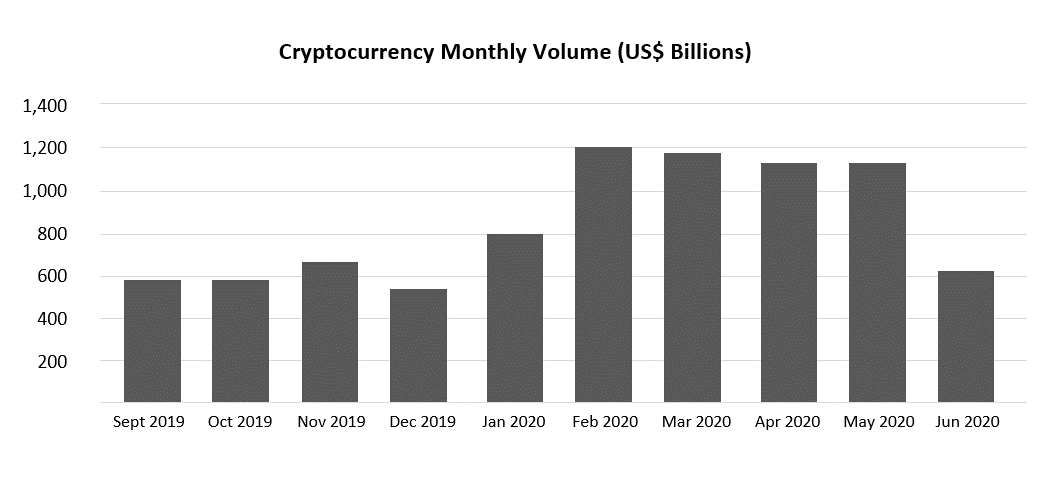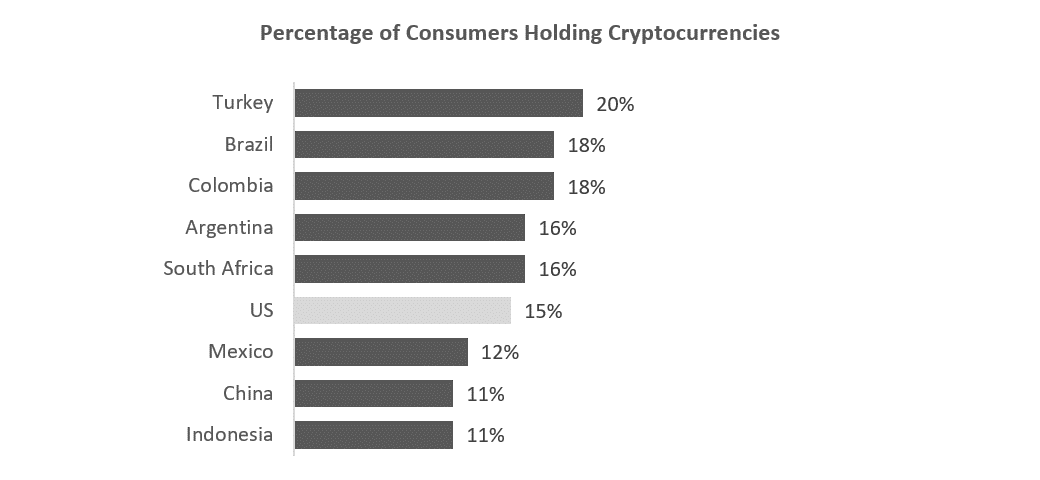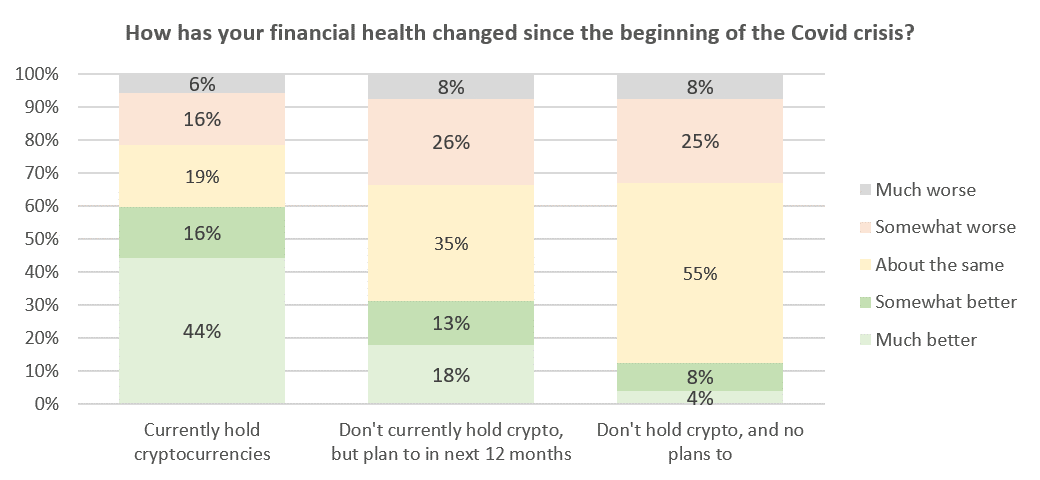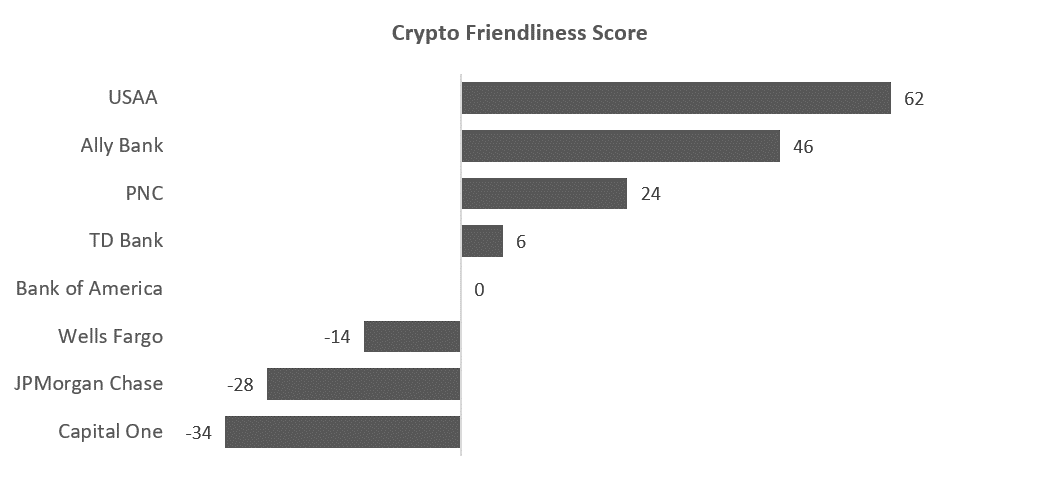Report: Cryptocurrency Binge In The Times Of Coronavirus | Digital Market News
(digitalmarketnews.com)
The beginning of 2020 saw a sharp increase in the trading of cryptocurrency such as Bitcoin and Ethereum among others. It jumped to a new high in February and plateaued there as Coronavirus crisis soared from March.

Cornerstone Advisors in a new study found that 15 percent of American adults currently own some form of cryptocurrency and more than half of these investors are first-timers who invested during the initial six months of this year.
On average, these new investors spent roughly $4000 per person in cryptocurrencies which adds up to approximately $67.5 billion.
American investors who invested in cryptocurrencies prior to 2020 have self-reported that their assets have an estimate of $111 billion, or approximately $7000 per person.
Who is causing the sharp increase in the Bitcoin investments in this time of crisis?

It has been observed that 8 out of 10 cryptocurrency buyers in 2020 have been men who have an average income of around $130,000. Four out of ten hold a Master’s degree and 70% of them have a Bachelor’s.
Study shows that 57% of the buyers of cryptocurrencies in 2020 to be millennials (26-40 years old) and 30% of them are Gen Xers (41-55 years old). Overall, 21% of Gen Xers and 27% of Millenials have assets in the form of cryptocurrencies in comparison to 3% Baby Boomers and 7% Gen Zers.
Bank of America is the primary bank for roughly 21% cryptocurrency buyers. It has been observed that 47% of the consumers that went on this Bitcoin binge in the time of the Coronavirus crisis are customers of BoA. One would believe that Bitcoin investors would be customers of digital banks, but a paltry 6% of them call digital banks their primary bank.
It has been noted that 44% of the American population has already invested in cryptocurrencies such as Bitcoin. Others have reported better financial health conditions since the beginning of the Coronavirus crisis, though there might be other variables that may affect the equation.

Demographically, though there is a similarity between the first time investors and the groups that invested before this period, the significant difference is that they are bringing about a change in the financial institutions they do business with.Half of the first-timers of 2020 shifted their primary banking in the past 6 months – one-third of whom did so in the last 3 months alone.
It is interesting to note that even though Apple Card holders comprise only 5% of all the credit card holders, 47% of them have invested in some form of cryptocurrency – two-thirds of whom have invested in 2020.
From a demographic perspective, the next wave of investors in Bitcoin comprising 11% of Americans are different from the current set of consumers. They are :
Currently, only 22% of the consumers of cryptocurrency are women. The change in investors will see this figure rise to 35% of the total.
Hispanic and African-American consumers comprise 28% of all Americans and 23% of current consumers come from these minority backgrounds. It is anticipated that the next 12 months will see an increase in investment from these ethnics groups to raise the percentage to 37%.
Currently, 6% of Gen Zers and Baby Boomers are cryptocurrency investors. In the next few months, the figures are predicted to increase to 17% Gen Zers and 11% Baby Boomers.
Only 18% of the current crypto investors do not hold an Associate’s college degree. This number is expected to rise to 36% with the next wave of investments.
One area of concern about the next wave of crypto investors is that just 30% consider themselves to be well educated in handling finances in comparison to 54% of investors already owning these assets.
The spike in the cryptocurrency investment has been a boon for Square. Revenue generated from Bitcoin for its Cash App for the first quarter of 2020 was $306 million in comparison to $65million generated in the first quarter of 2019.
Quite predictably, reports show that Paypal plans to use Venmo and PayPal apps to offer consumers to purchase cryptocurrencies.
While many banks do not allow their customers to buy cryptocurrencies using their cards, the rise in the crypto investments leads to the question of whether or not the banks should provide more crypto-related services altogether.

While some banks are still in the decision making phase, a few have taken a head start over others. A “crypto friendliness” score is provided by Moon Banking for banks and USAA and Ally Bank have taken the lead.
All banks, especially credit unions and community banks should consider providing Bitcoin wallets and other crypto trading services as a way to offer better services to their customers.

Who is investing in Bitcoins?
Cornerstone Advisors in a new study found that 15 percent of American adults currently own some form of cryptocurrency and more than half of these investors are first-timers who invested during the initial six months of this year.
On average, these new investors spent roughly $4000 per person in cryptocurrencies which adds up to approximately $67.5 billion.
American investors who invested in cryptocurrencies prior to 2020 have self-reported that their assets have an estimate of $111 billion, or approximately $7000 per person.
Bitcoin Buyers Demographics
Who is causing the sharp increase in the Bitcoin investments in this time of crisis?

Well educated, high-income men
It has been observed that 8 out of 10 cryptocurrency buyers in 2020 have been men who have an average income of around $130,000. Four out of ten hold a Master’s degree and 70% of them have a Bachelor’s.
Millennials and Gen Xers
Study shows that 57% of the buyers of cryptocurrencies in 2020 to be millennials (26-40 years old) and 30% of them are Gen Xers (41-55 years old). Overall, 21% of Gen Xers and 27% of Millenials have assets in the form of cryptocurrencies in comparison to 3% Baby Boomers and 7% Gen Zers.
BoA Customers
Bank of America is the primary bank for roughly 21% cryptocurrency buyers. It has been observed that 47% of the consumers that went on this Bitcoin binge in the time of the Coronavirus crisis are customers of BoA. One would believe that Bitcoin investors would be customers of digital banks, but a paltry 6% of them call digital banks their primary bank.
The Benefit of Bitcoin
It has been noted that 44% of the American population has already invested in cryptocurrencies such as Bitcoin. Others have reported better financial health conditions since the beginning of the Coronavirus crisis, though there might be other variables that may affect the equation.

First Time Investors
Demographically, though there is a similarity between the first time investors and the groups that invested before this period, the significant difference is that they are bringing about a change in the financial institutions they do business with.Half of the first-timers of 2020 shifted their primary banking in the past 6 months – one-third of whom did so in the last 3 months alone.
The Apple effect
It is interesting to note that even though Apple Card holders comprise only 5% of all the credit card holders, 47% of them have invested in some form of cryptocurrency – two-thirds of whom have invested in 2020.
The next wave of investors
From a demographic perspective, the next wave of investors in Bitcoin comprising 11% of Americans are different from the current set of consumers. They are :
Women
Currently, only 22% of the consumers of cryptocurrency are women. The change in investors will see this figure rise to 35% of the total.
Minorities
Hispanic and African-American consumers comprise 28% of all Americans and 23% of current consumers come from these minority backgrounds. It is anticipated that the next 12 months will see an increase in investment from these ethnics groups to raise the percentage to 37%.
Younger and older
Currently, 6% of Gen Zers and Baby Boomers are cryptocurrency investors. In the next few months, the figures are predicted to increase to 17% Gen Zers and 11% Baby Boomers.
Less-educated
Only 18% of the current crypto investors do not hold an Associate’s college degree. This number is expected to rise to 36% with the next wave of investments.
One area of concern about the next wave of crypto investors is that just 30% consider themselves to be well educated in handling finances in comparison to 54% of investors already owning these assets.
Banks and Crypto opportunity
The spike in the cryptocurrency investment has been a boon for Square. Revenue generated from Bitcoin for its Cash App for the first quarter of 2020 was $306 million in comparison to $65million generated in the first quarter of 2019.
Quite predictably, reports show that Paypal plans to use Venmo and PayPal apps to offer consumers to purchase cryptocurrencies.
While many banks do not allow their customers to buy cryptocurrencies using their cards, the rise in the crypto investments leads to the question of whether or not the banks should provide more crypto-related services altogether.

While some banks are still in the decision making phase, a few have taken a head start over others. A “crypto friendliness” score is provided by Moon Banking for banks and USAA and Ally Bank have taken the lead.
All banks, especially credit unions and community banks should consider providing Bitcoin wallets and other crypto trading services as a way to offer better services to their customers.
-
- 1
Francisco Gimeno - BC Analyst No doubt the present bullish mood in Bitcoin and crypto is calling many (also because of FOMO) who are scared of the possible Autumn economic crisis due to COVID19. We don't know what is going to happen, but is interesting to see this movement where BTC is becoming a refuge and a hedge for many, against volatility in fiat.


